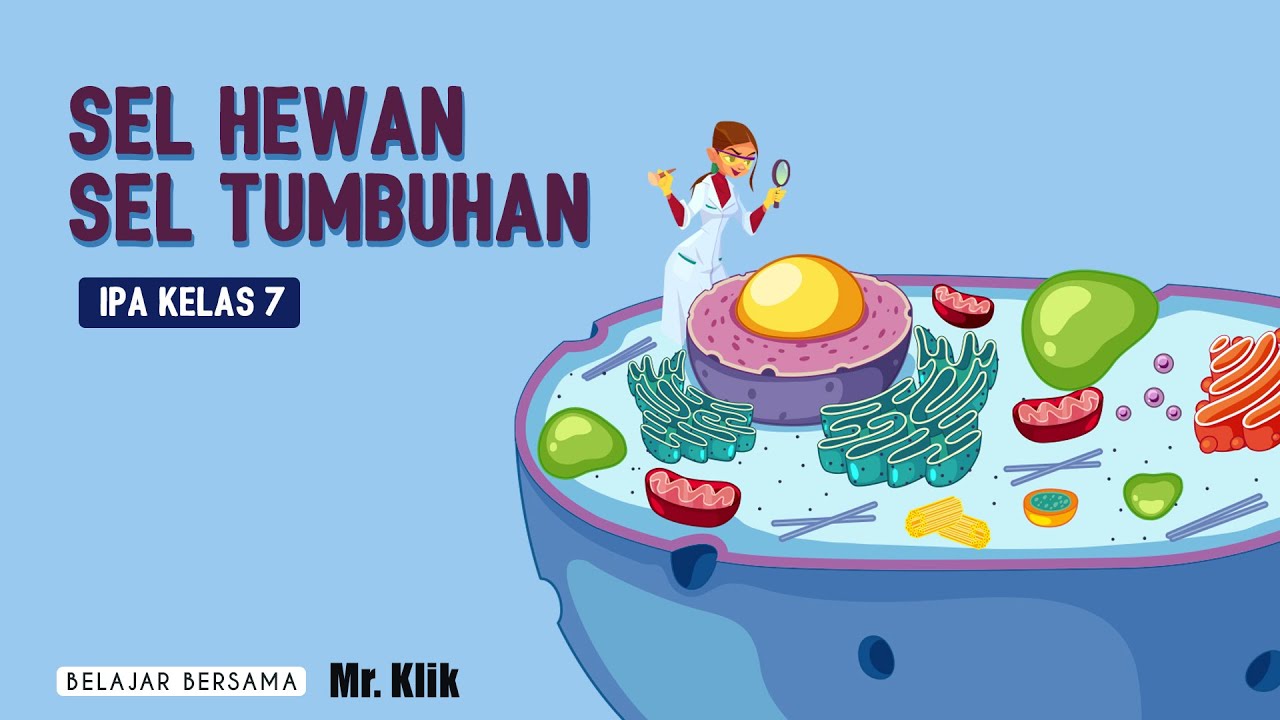PLANT VS ANIMAL CELLS
Summary
TLDRThis script explores the similarities and differences between animal and plant cells, highlighting their eukaryotic nature with membrane-bound nuclei and organelles. It delves into the functions of cytoplasm, cell membranes, mitochondria, and the endoplasmic reticulum, emphasizing the unique features of plant cells like cell walls, chloroplasts, and large vacuoles. It also touches on the distinct energy acquisition methods of autotrophic plants and heterotrophic animals, and the structural differences in cytoskeletons, centrioles, and cell-to-cell connections.
Takeaways
- 🔬 Animal and plant cells are both eukaryotes, meaning they have a membrane-bound nucleus.
- 📏 Plant cells are generally larger than animal cells, except for large animal cells like an unfertilized ostrich egg.
- 🧬 Both cell types have membrane-bound organelles, cytoplasm, a cell membrane, a nucleus, mitochondria, rough and smooth endoplasmic reticulum, a Golgi apparatus, and peroxisomes.
- 🌡️ The nucleus houses the cell's genetic information, while the cytoplasm includes all contents within the cell membrane except the organelles.
- ⚡ Mitochondria are the powerhouses of the cell, performing aerobic respiration to convert glucose to ATP.
- 🛠️ Rough endoplasmic reticulum (covered in ribosomes) helps produce proteins, while smooth endoplasmic reticulum produces lipids.
- 📦 The Golgi apparatus modifies proteins, and peroxisomes help metabolize waste.
- 🌿 Plant cells have a rigid cell wall made of cellulose, giving them fixed, angular shapes, whereas animal cells are mostly round and irregular.
- 🔋 Plants are autotrophs, producing their own food through photosynthesis using chloroplasts, while animals are heterotrophs, ingesting food for energy.
- 🧹 Plant cells have large central vacuoles that can take up to 90% of the cell's volume, storing nutrients and degrading waste, whereas animal cells have smaller, multiple vacuoles.
- 🧬 Both plant and animal cells have cytoskeletons composed of microtubules, intermediate filaments, and microfilaments, but these structures are arranged differently.
- 🌱 Centrioles are present in animal cells but only in lower plants; plant cells use small nucleation sites for microtubule organization.
- 🔗 Plant cells have plasmodesmata for cell-to-cell communication, while animal cells have analogous gap junctions.
Q & A
What do animal and plant cells have in common as eukaryotes?
-Both animal and plant cells share several features as eukaryotes, including a membrane-bound nucleus, membrane-bound organelles, cytoplasm, a cell membrane, mitochondria, rough and smooth endoplasmic reticulum, a Golgi apparatus, and peroxisomes.
Why are plant cells often larger than animal cells?
-Plant cells are often larger than animal cells, except for eggs, due to the presence of a rigid cell wall that provides additional stability and protection, allowing for larger cell sizes.
What is the largest single animal cell and how much does it weigh?
-The largest single animal cell is an unfertilized ostrich egg, which weighs around 1.5 kilograms.
What is the function of the cell membrane in both animal and plant cells?
-The cell membrane serves as a semi-permeable barrier that controls the cell's own biochemistry by allowing only certain substances to pass through, thus maintaining the internal environment.
How do mitochondria contribute to the cell's energy production?
-Mitochondria are the powerhouses of the cell, specialized in performing aerobic respiration to convert glucose into ATP, the energy currency used for various life-sustaining functions.
What is the role of the endoplasmic reticulum in protein production and storage?
-The endoplasmic reticulum aids in the production and storage of proteins. The rough endoplasmic reticulum, covered in ribosomes, translates RNA into proteins, while the smooth endoplasmic reticulum is involved in lipid synthesis.
How do plant cells differ from animal cells in terms of energy production?
-Plant cells are autotrophs, producing their own food through photosynthesis using chloroplasts, which contain chlorophyll to capture light energy. Animal cells, on the other hand, are heterotrophs and must ingest food to obtain sugars for energy production.
What is the significance of the large central vacuole in plant cells?
-The large central vacuole in plant cells can occupy up to 90 percent of the cell's volume and has various roles, including filling up space, storing nutrients, and providing a space for waste degradation through enzymes.
How do the cytoskeletons in plant and animal cells differ in structure and arrangement?
-Both plant and animal cells have cytoskeletons composed of microtubules, intermediate filaments, and microfilaments. However, the arrangement of these structures varies, with plant cells lacking centrioles and having multiple nucleation sites instead.
What is the function of lysosomes in animal cells, and are they present in plant cells?
-Lysosomes in animal cells are membrane-bound vesicles containing hydrolytic enzymes that break down biomolecules, playing a role in processes like secretion, plasma membrane repair, cell signaling, and energy metabolism. Their presence in plant cells is still debated.
What is the role of plasmodesmata in plant cells, and how do they compare to gap junctions in animal cells?
-Plasmodesmata are channels that connect two plant cells, allowing for communication and transport of substances. Gap junctions in animal cells serve a similar purpose, connecting the cytoplasm of two adjacent cells for intercellular communication.
Outlines

هذا القسم متوفر فقط للمشتركين. يرجى الترقية للوصول إلى هذه الميزة.
قم بالترقية الآنMindmap

هذا القسم متوفر فقط للمشتركين. يرجى الترقية للوصول إلى هذه الميزة.
قم بالترقية الآنKeywords

هذا القسم متوفر فقط للمشتركين. يرجى الترقية للوصول إلى هذه الميزة.
قم بالترقية الآنHighlights

هذا القسم متوفر فقط للمشتركين. يرجى الترقية للوصول إلى هذه الميزة.
قم بالترقية الآنTranscripts

هذا القسم متوفر فقط للمشتركين. يرجى الترقية للوصول إلى هذه الميزة.
قم بالترقية الآن5.0 / 5 (0 votes)






